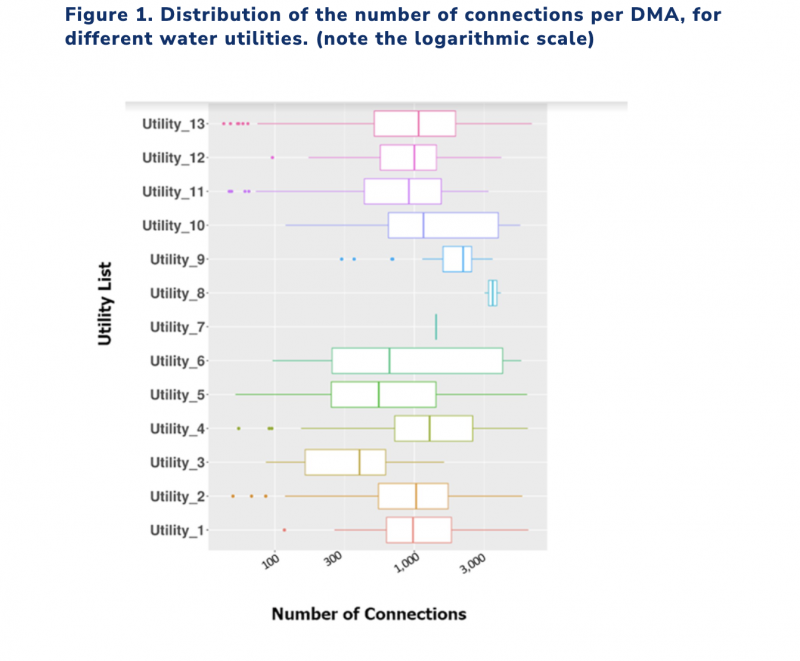Let's Talk about DMA Size
Published on by Water Network Research, Official research team of The Water Network in Case Studies
Smallest detectable leak
The pros and cons of dividing a water distribution network into District Metered Areas (DMAs) are well understood. But how can you tell what size DMAs will best enable you to locate leaks?
Let’s look at 15 water utilities from around the world and more than 1000 DMAs of different shapes and sizes and find out! We will learn: (1) The kind of tradeoffs to consider when choosing DMA sizes; (2) the most effective DMA size range for finding leaks is between 500 and 2000 connections; (3) that there is an empirical recipe to assess the minimal detectable leaks.
No Such Thing as One-Size-Fits-All
We want to know about every ongoing leakage in our water distribution systems. This knowledge is critical for planning the perfect chain of repair operations. Surprisingly, we can obtain perfect knowledge in a very methodical way – by making sure that our water distribution network architecture is covered by a swarm of small DMAs. This approach makes it possible to calculate the water supply in each small region, providing a very cheap way of zeroing in on trends, anomalies, creeping nightlines, bursts, etc. This is achieved without installing meters on every pipe, thanks to the math of mass conservation rules. These rules state that the total water supply in a region equals the incoming volume minus the outgoing volume. Analytical solutions, such as TaKaDu, help a lot in organizing the supply information into a prioritized flow of actions to be taken.
On the other hand, there is also merit to the extreme opposite network architecture. It is possible to get away with designing fat bulky DMAs or even not having DMAs at all. Having no small DMAs increases redundancy of pipe-paths (which is good), limits dead ends with reduced water quality, and is more energy efficient. Such architecture is also a lot cheaper to create (but is not necessarily cheaper to maintain).
Therein lies the tension: you can get perfect information, but you pay for it in other ways.
DMAs should not be too big or small. If too small, your supply calculations will be very unstable (more on this, below). If too big, you will not be able to detect small anomalies or leaks, only very large ones. So (for both DMA-based detection and in general), we want to know what is the smallest detectable leak when using data analytics. If you can detect leaks of 0.1 l/s or even smaller* , then you are probably OK. When utilizing DMAs for leak detection, the smallest detectable leak is determined mostly by statistics. We will discuss this point below.

The good news is that there’s a lot of wiggle room in the range between too-small and the too-big. In the next section, you will be able to locate your organization on this spectrum by using three straightforward metrics for DMA size.
How Big is Big? How Small is Small?
There are three simple metrics to quantify DMA sizes:
(1) The number of connections
(2) The distribution pipes’ total length
(3) The average daily supply
Taxonomy
- Leakage Detection
- Leakage
- Leakage Reduction
- leakage
- pipeline leak detection
- Leak Detection and Inspection